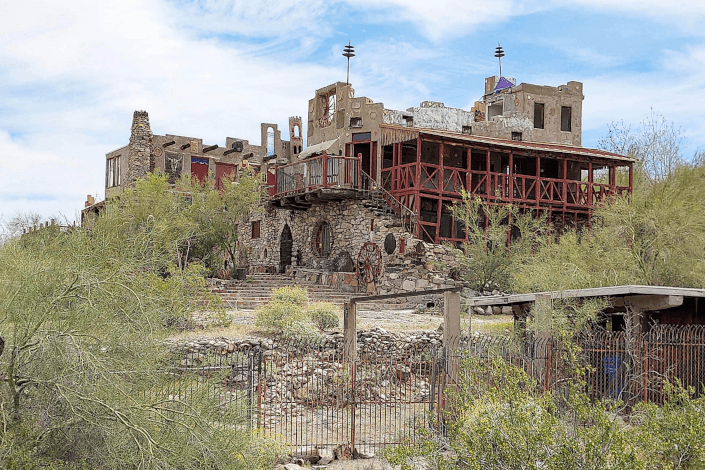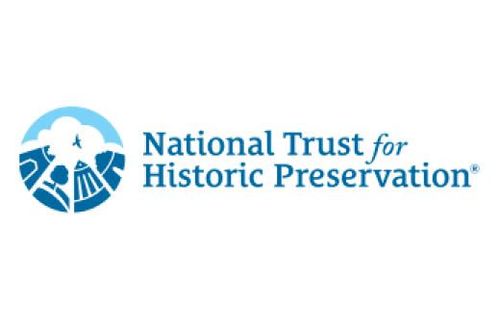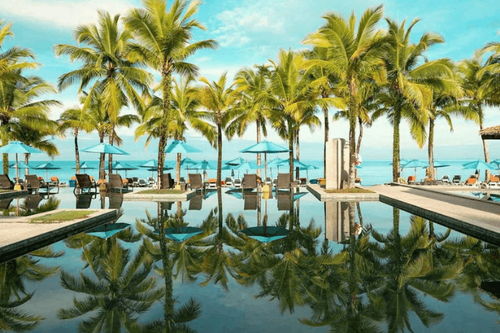Where travel agents earn, learn and save!
News / Announcing the 2025 list of America's 11 most endangered historic places
Explore this year’s endangered places

Photo: Mystery Castle in Phoenix, AZ. Photo by Robert Graham
The National Trust for Historic Preservation unveiled its annual list of America's 11 Most Endangered Historic Places.
Since first debuting in 1988, the list of America's 11 Most Endangered Historic Places has proven to be a highly effective tool for shining a light on the threats facing the nation's greatest treasures. Due to the efforts of the National Trust and its passionate supporters, the 11 Most Endangered list has often provided the decisive force needed to preserve important cultural landmarks. Now in its 38th year, the ongoing initiative has galvanized public support behind more than 350 sites to date with only a handful lost.
To learn more about the places on this year's list and find out what you can do to help preserve them, go to SavingPlaces.org/11Most.
The 2025 list of America's 11 Most Endangered Historic Places (alphabetical):
Cedar Key, Florida
Cedar Key is an archipelago of small islands off the west coast of Florida that is increasingly threatened by rising sea levels and severe storm events, including a record storm surge brought by Hurricane Helene in 2024. As Cedar Key recovers and plans for the future, support and funding are needed to implement preservation-sensitive resilience plans, ensuring that this historic community representative of "Old Florida" can continue to thrive.
French Broad and Swannanoa River Corridors, Western North Carolina
Along the French Broad and Swannanoa Rivers in Western North Carolina, the historic city of Asheville and numerous other towns like Swannanoa contribute to the region's vibrant arts and tourism economy. While recovery from the devastation wrought by Hurricane Helene in 2024 is underway, these communities still need national attention and support for rebuilding and resilience efforts to ensure a thriving future.
Hotel Casa Blanca, Idlewild, Michigan
Located in the historic Black resort community of Idlewild, Michigan, Hotel Casa Blanca served as a premier lodging site for African American travelers, entertainers, and thought leaders during segregation. However, after integration, like many formerly segregated Black resorts, Idlewild experienced lower visitation and economic disinvestment, and Hotel Casa Blanca has now been vacant for over 30 years. Support and funding are needed to rehabilitate the hotel so it can once again serve the Idlewild community.
May Hicks Curtis House, Flagstaff, Arizona
Known as the "Betsy Ross" of Arizona, May Hicks Curtis sewed the first Arizona state flag in 1911. The May Hicks Curtis House where she lived and worked for decades must be moved from its current location due to new construction, but the City of Flagstaff is working to save, relocate, and rehabilitate the house for community use while commemorating the important Women's history story of this site, which is located less than one block from the earliest alignment of Route 66.
Mystery Castle, Phoenix, Arizona
Mystery Castle was constructed circa 1934-1945 by Boyce Luther Gulley, who built the complex by hand for his daughter Mary Lou without plans, permits, or formal architectural or engineering training. Mary Lou and her mother Frances transformed Mystery Castle into a nationally known tourist attraction from the 1950s-2000s. However, the building has been largely unoccupied for several years and requires significant investment to halt deterioration and reopen it to the public. Mystery Castle supporters and preservationists are leading a grassroots effort to save this unique Phoenix landmark.
Oregon Caves Chateau, Cave Junction, Oregon
The Oregon Caves Chateau, located within the Oregon Caves National Monument and Preserve, has significantly benefited the rural economy of nearby Cave Junction and surrounding communities for 91 years. Since its construction in 1934, the Chateau has offered overnight lodging and concessions, but the need for extensive repair and restoration necessitated closure in 2018. Since that time, additional unplanned structural and seismic upgrades have dramatically increased project costs. Significant funding is necessary to reopen the Oregon Caves Chateau, allowing it to once again serve visitors and support essential economic revitalization in its rural region.
Pamunkey Indian Reservation, King William County, Virginia
The Pamunkey people have lived in Tsennacommacah, on and around the lands now known as the Pamunkey Indian Reservation in Virginia, for at least 15,000 years. The Pamunkey Indian Tribe, a federally recognized sovereign Tribal nation, has never ceded their 1600-acre peninsula on the Pamunkey River. However, tribal lands are now at risk, as sea level rise and increasing storm frequency and severity could cause most of the Reservation to become inaccessible within 75 years. The Tribe needs funding and support to expand resilience efforts, preserve historic resources on the Reservation, conduct in-depth archaeological research, and prepare for potential future relocation.
San Juan Hotel, San Juan, Texas
The San Juan Hotel, built in 1920, has a long and complicated history in the Rio Grande Valley of Texas and is one of the area's most recognizable landmarks. Local advocates hope to work with the City of San Juan to rehabilitate the building to serve the community.
Terminal Island Japanese American Tuna Street Buildings, Los Angeles, California
Only two buildings remain on Tuna Street, once the vibrant main street of the Japanese American fishing village on Terminal Island, a community that was forcibly removed and incarcerated during World War II. The buildings are now owned by the Port of Los Angeles, which is considering demolition. The Japanese American community of descendants and survivors are advocating for protection and reuse of the buildings in a way that honors their ancestors and commemorates this dark chapter of American history.
The Turtle, Niagara Falls, New York
The Turtle, also known as the Native American Center for the Living Arts, was completed in 1981 and designed by Arapaho architect Dennis Sun Rhodes as a powerful symbol of Indigenous heritage. Unfortunately, the building has been vacant for almost 30 years, and the owner previously shared plans for demolition. A coalition has formed in hopes of "reawakening" the Turtle once again.
The Wellington, Pine Hill, New York
The Wellington Hotel is one of few surviving examples of the large-scale wood-frame resorts built in the Catskills region of New York in the late 1800s. After years of deterioration, the Wellington's foundation was in danger of collapse. However, a group of community members have purchased the building to save and reactivate it to serve the historic Pine Hill community as a food market, cafe, and affordable housing, but additional partnerships and funding are needed to realize this vision.











